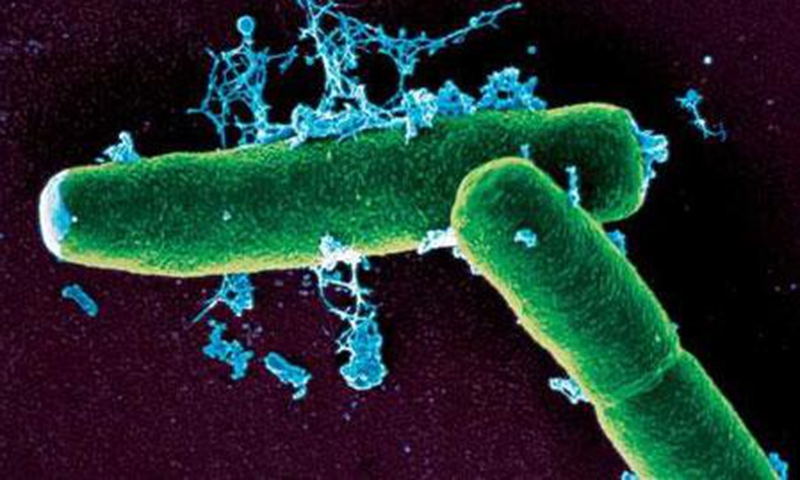
Bacillus anthracis, the pathogen that causes anthrax Photo: website of Chinese Center for Disease Control and Prevention
The droplets with anthrax spores produced by a high-pressure water gun used to wash a backyard after slaughtering two cattle that died of an unknown disease could be the source of the anthrax pneumonia case reported in Beijing in August, according to a report released by the China CDC Weekly on Tuesday, disclosing detailed information of the case including the results of an epidemiological investigation.
On August 9,
Beijing reported an anthrax pneumonia patient who came from Chengde, in North China's Hebei Province, and had contact history with cattle, sheep and related products. The patient, a 46-year-old female, is from the Bashang Grassland, which is a semi-pastoral area.
However, the disease in cattle and sheep often develops rapidly and there is no chronic or carrier state. The infection risk through exposure to asymptomatic cattle and sheep is very low, according to the report.
The patient often visited meat wholesale market to buy beef and mutton before she became sick. It is more possible to be infected with cutaneous anthrax than with inhalational anthrax through contact with meat or blood of dead animals. However, her medical records did not show such conditions, so the risk is very low that she was infected from exposure to meat in the markets.
Two cattle raised by the patient's brother-in-law died of an unknown disease on July 26 and were immediately slaughtered in the backyard. At that moment, the patient's relative was informed that he might have cutaneous anthrax and he called to stop the slaughtering. The animals' meat, fur, and other parts were disposed of outside the village.
The place where the animals were slaughtered was immediately disinfected and staff used a high pressure water gun to wash the ground and the sewage. The other two cattle that also died were buried untouched.
The droplets containing anthrax spores washed with a high-pressure water gun could be the possible cause of the infection as the patient has to cross the slaughter site to go to the toilet, according to the report.
The patient's brother-in-law could be infected with anthrax spores from the soil as the village is located in a historically anthrax-infested area, said the report. The heavy rainfall may have exposed the spores on the soil and contaminated the grass. The patient could have been infected by the cattle before the slaughter or after handling the carcass.
On August 9, fur and beef samples were taken from buried cattle and the beef sample tested positive for the nucleic acid of Bacillus anthracis, with one strain of Bacillus anthracis isolated from one sample by bacterial culture, the report said.
The current event of inhalational anthrax was reported as a level IV public health emergency. A total of 127 close contacts of the case were quarantined at designated regions or at home for 12 days from the last contact with the patient, the report said.




